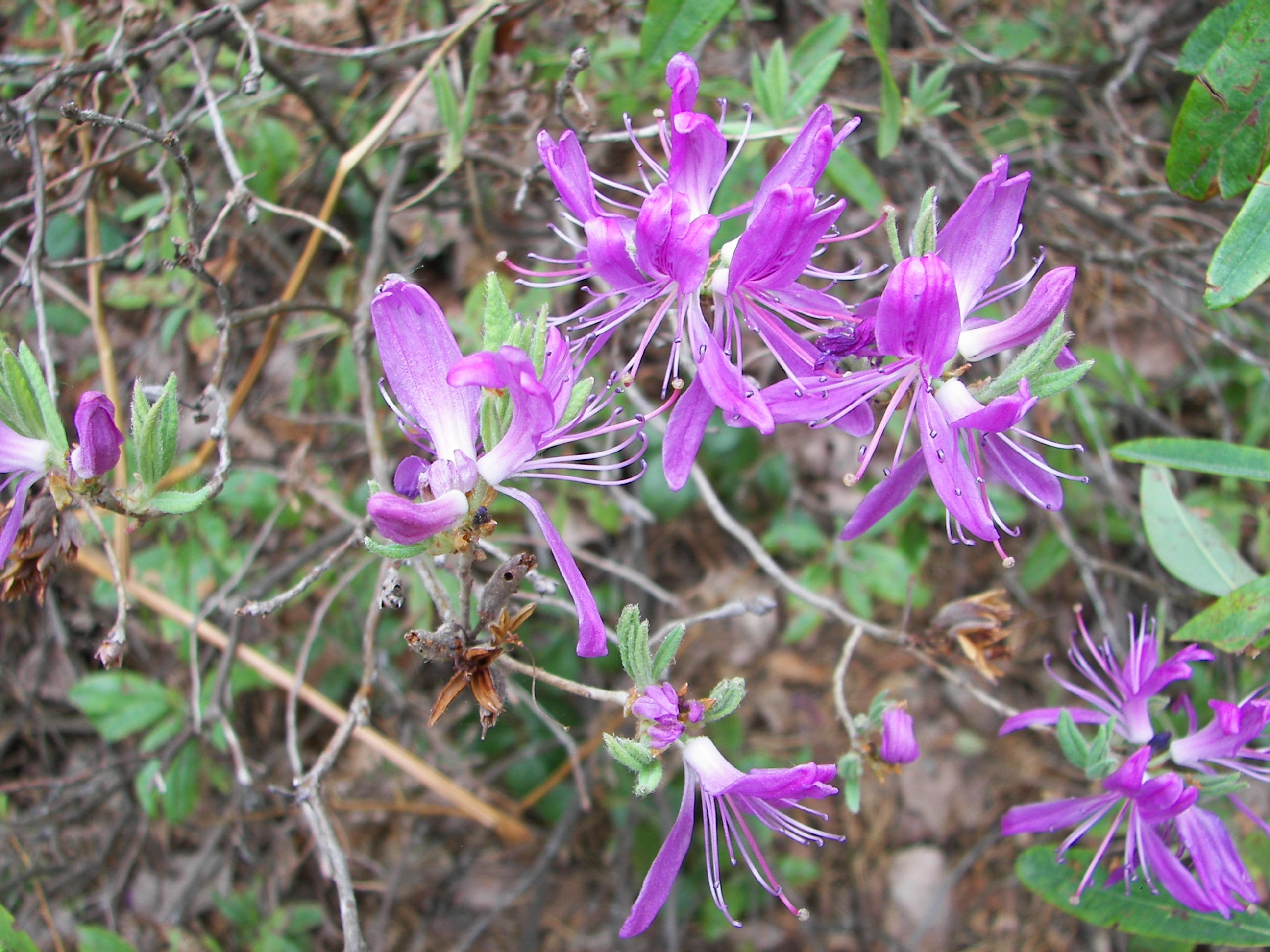Rhodora
(Rhododendron canadense)

Description
“Pet poisonous” – Toxic parts: entire plant Rhododendron canadense, the rhodora, is a deciduous flowering shrub that is native to northeastern North America. Today's botanists consider the rhodora to be a distant relative of the other North American members of its genus, but the difference in floral structure did lead 19th century taxonomists to assign the plant its own genus Rhodora. Its closest relative is Rhododendron vaseyi from the Appalachian Mountains, which differs in having 7 stamens. DNA sequencing shows that R. vaseyi is not related to R. canadense, but more to R. albrechtii. It reaches a mature height of 0.5–1.2 m (approximately 1–3 feet). In early spring, it produces pinkish-purple flowers in clusters of 2–6 together; each flower is 2–3 cm (approximately 1 inch) in diameter, with a five-lobed purple corolla. The flowers are unusual in comparison with other species of the genus Rhododendron found in northeastern North America. Most rhododendrons of the region have tubular flowers with 5 stamens each, while R. canadense has 10 stamens housed inside a zygomorphic corolla. The leaves open only after the flowers have bloomed and wilted; they are narrow oval, 2–6 cm long and 1–2 cm broad. When not in flower, it can still be identified by its peculiar, orange-brown seed cases, 1–1.2 cm long.
Taxonomic tree:







